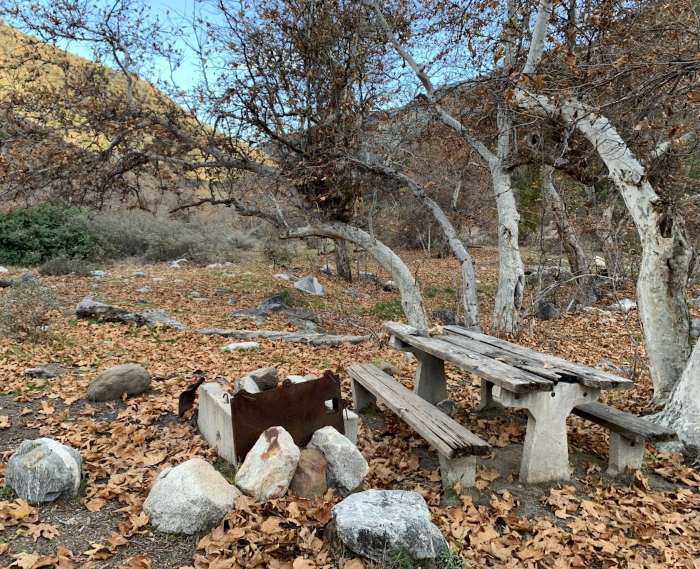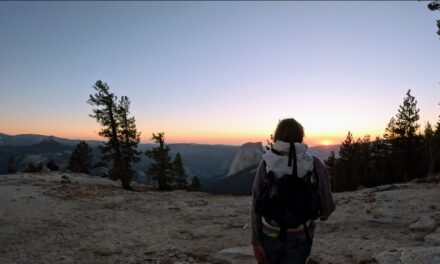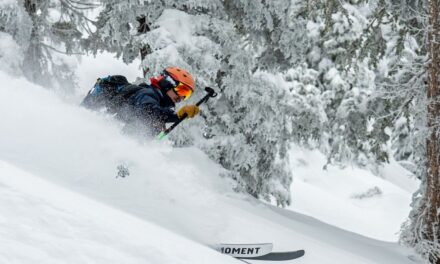- Death Valley’s Battle With Climate Extremes - 01/01/2024
- The Future of Homewood - 12/05/2023
- Kula Cloth - 10/18/2023
A magical backpacking area north of Ojai in Ventura County
The light is returning! By mid-February nights are a full hour shorter than the longest of winter solstice and we are gaining two minutes of light every day. Flowers unfurl tender petals, birds flutter through budding branches, small mammals resume their frantic activities. What better way to celebrate the glory and promise of spring than a quick backpacking trip?
Sure, the nights are still over 13 hours long. The mountains are buried under snow, and lowland forests are still dripping and chilly. But the chaparral cloaked hills outside of Ojai offer sunny skies and mild temperatures perfect for late winter backpacking. Two backcountry hot springs, moderate terrain, a wild and scenic river, the chance to see one of the planet’s rarest birds, and the desert’s most charismatic megafauna beckon. The Sespe Wilderness is calling and you must go.
The area’s original inhabitants, the Chumash, lived here for at least 10,000 years before Europeans showed up. The word Sespe means “kneecap” in their native language. The wisdom of elders and close observation of nature inspired and informed their culture and values. Accepting personal limitations, practicing moderation in hunting and gathering, and understanding that compensation for hard work comes in many different forms led to harmony with their environment and each other. They revered the area’s soothing hot springs for millennia, believing them to have healing powers. Take a moment at the trailhead to appreciate the people who stewarded this land for thousands of years and still call it home.
The Trailhead
Though there are three ways to access Willett and Sespe hot springs, the easiest route starts at the Piedra Blanca trailhead, about 20 miles from the ritzy hippie enclave of Ojai.

A rainbow over Sespe Wilderness. Photo: Leonie Sherman
Piedra Blanca’s sandstone cliffs, a ghostly pale gash against a sea of dark green hills, are visible from the parking area. About half a mile from the trailhead hikers can turn north to visit the wild eroded formations or continue east along Sespe Creek to the hot springs.
Sespe Creek, which is 61 miles long, is the last remaining undammed river in Southern California. Starting 5,000 feet above sea level in the Santa Ynez Mountains, the creek tumbles over waterfalls and boulders before reaching the Santa Clara River south of Fillmore. In 1992, as part of the Los Padres Condor Range and River Protection Act, Congress designated 31.5 miles as Wild and Scenic River, making it the first seasonally flowing stream to be granted such protection.
The trail crosses Sespe Creek ten times in 17 miles; trekking poles are a good idea during peak runoff. Though the hot springs are downstream and generally downhill, the trail still involves almost 2,000 feet of climbing as it winds around side canyons. The grade is gentle and there’s rarely more than 500 feet in a single push. Several idyllic riverside campsites beckon before reaching the junction for Willett Hot Springs, about ten miles from the trailhead.
The Hot Springs

Sespe Hot Springs. Photo: Leonie Sherman
Named for an early homesteader, Willett Hot Springs features a ten foot diameter tub and sparkling green water that reeks of sulphur. An inflow pipe keeps the temperature constant at between 99-100 degrees; perfect for a long soak. The first ten miles of trail was a road until the Wilderness Act of 1964 closed it to motorized traffic. The final half mile to the springs involves 300 feet of steep climbing. Fifty feet shy of the springs, the path crosses a campsite with a fire ring; set up a tent further away to leave the springs available for other visitors.
Five miles beyond the Willett junction the trail turns north into Hot Springs Canyon. Half a mile up there is ample camping along a warm creek. Continuing north, the creek gets hotter; at its source it’s almost 120 degrees, some of the hottest wild water in the state. Sespe Hot Springs are about a mile and a half from the junction and consist of a series of excavated pools. Previous visitors constructed rock walls around a couple of palm trees that provide wind shelter for a tent during blustery days. Sespe Hot Springs is a long push for a single day, and finding the right temperature can be a challenge.
The Wildlife
East of Sespe Hot Springs, over the Topatopa Mountains, lies the 53,000-acre Sespe Condor Sanctuary, set aside in 1947 and expanded in 1951 to aid recovery efforts for North America’s largest and rarest bird. The entire sanctuary is closed to public entry except by permit, save for four quarter-mile wide corridors open to hikers.
A wingspan of up to nine-and-a-half feet allows condors to soar for hours without flapping them; they can cover 100 miles in a single day searching for carrion. Once abundant across North America, the end of the last glacial period reduced their range to the southwest deserts and west coast. In the modern era, Europeans reduced their food supply of elk and antelope and often shot or poisoned the massive bird, which can weigh up to 25 pounds. They incubate a single egg every other year. By the early 1900s, the condor clung to a tenuous existence only in the remote mountains of Southern California.

A riverside campsite in the fall. The best time to visit is from March through June, when it is green and the wildflowers are in bloom, but this is also the busiest time of the year. Photo: Leonie Sherman
DDT, lead-infected carrion and habitat loss decimated their population further and they were declared endangered in 1967. By the 1980s there were fewer than 30 California condors left; fear of extinction led to a captive breeding program that involved the capture of every wild condor left on the planet. Thanks to the success of that program, today almost 250 wild condors grace the skies above the Grand Canyon, southwestern Utah, Pinnacles National Monument, the Big Sur Coast, Humboldt County and Sespe Wilderness. Roughly the same number remain in zoos for captive breeding. The condor conservation program has cost at least $20 million to date, roughly a quarter the price of a single F-35 jet. The continued existence of wild California condors reminds us what we hold dear.
The Chumash also revered the California condor. About seven miles from Sespe Hot Springs there’s a cave with paintings of the massive bird; other caverns and walls throughout traditional Chumash territory feature similar artwork. Capes of condor feathers gave the people who wore them special powers. During Francis Drake’s first contact with Chumash natives, they threw a bundle of what was probably condor feathers onto the deck of his boat; this was traditionally part of a mourning ritual.
While the California condor is the largest and rarest bird in the region, the desert bighorn sheep is its most charismatic megafauna. Though native to the area, introduced diseases and hunting extinguished the local population by 1914. In 1985, 37 desert bighorn from a San Gabriel Mountains population were reintroduced to the Sespe area; in 1992, a survey found only two remaining desert bighorn. Less than a decade later, though, hikers reported sightings of bighorn sheep near the hot springs. The current population is believed to be about 30.
During our final dawn soak at Sespe, my friend and I heard rocks falling from a cliff and looked up to find the silhouette of a bighorn against the tangerine lavender hued sky. We watched in silent reverence as the sheep meandered out of our view. And we stepped into the morning chill to begin our journey home.
The Willett and Sespe hot springs are located on the traditional lands and territories of the Chumash tribe. For more information on Indigenous land acknowledgments, go to nativegov.org/news/a-guide-to-indigenous-land-acknowledgment and native-land.ca
***
Main image: Enjoying a soak after a roughly ten-mile hike into Willett Hot Springs. Photo: Steve Adrian
Read other articles by Leonie Sherman here.













